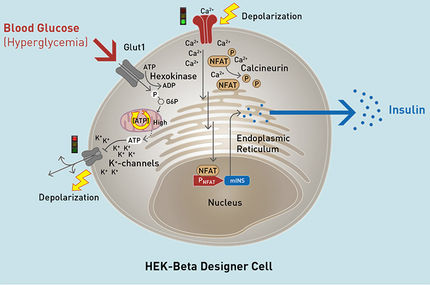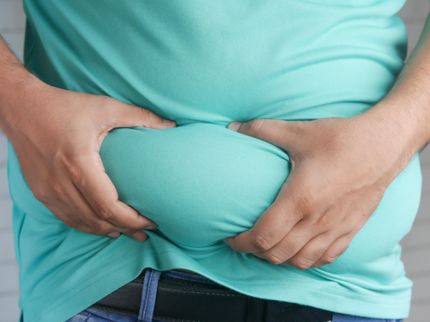How muscle cells control fatty acid uptake
A new study from the Swedish medical university Karolinska Institutet shows that the blood vessels and muscles of the heart can regulate the uptake of fatty acids that we ingest through meat, milk products and other food. The researchers behind the study have also identified the way in which regulation is governed by the muscles themselves. The results, which are published in Nature, open the way for new forms of treatment for pathological fat accumulation in the muscles which, in turn, increases the risk of type II (adult) diabetes and cardiovascular disease.
Previous research has shown that the extreme, pathological accumulation of fat in the muscles is an important contributory factor to the development of insulin resistance and type II diabetes. It is therefore important to understand and control how the uptake of fat from the blood is regulated. The function of the blood vessels in this process has remained largely unexplored despite the fact that fatty acids must be transported through the cells of the vascular walls before they can be taken up and metabolised by the working muscles.
In this present study, the researchers examined the biological function of the VEGF-B protein, which signals from the muscles to the blood vessel walls. They were able to show that levels of VEGF-B correlate to the mitochondrial content and energy status of the muscles. Further, the researchers showed that VEGF-B can control levels of fatty acid transport proteins (FATPs) in the vascular wall. VEGF-B signalling from the muscles to these cells led to an increase in FATPs and thus a greater intake of fat through the vascular walls.
“Mice that lacked either the VEGF-B protein or its receptors in the walls of the blood vessels had a lower intake of fat to the muscles and the heart, and less accumulation of fat in the different tissues,” says associate professor Ulf Eriksson, who led the study at Karolinska Institutet’s Department of Medical Biochemistry and Biophysics. “Instead, we found that the residual fat accumulated in the white adipose tissue, causing a slight weight increase in the mice.”
However, their most striking finding was that the mice that lacked VEGF-B, and that consequently had lower muscular fat uptake, increased the uptake of sugar to the heart. Since insulin resistance and type II diabetes in humans are characterised by high glucose levels and the reduced uptake of sugar to the muscles, it is hoped that these results can one day be developed into new treatments for several metabolic diseases, including type II diabetes.
“There’s a well-known correlation between fat accumulation in muscle tissue and insulin resistance and adult diabetes,” says Dr Eriksson. “We are now making rigorous efforts to examine how we can affect insulin signalling and reduce the level of blood glucose in diabetic mice by blocking VEGF-B signalling.”
Apart from Dr Eriksson’s research team at Karolinska Institutet, the study involved researchers from Uppsala and Gothenburg universities, Sahlgrenska University Hospital, Karolinska University Hospital and the University of Kuopio, Finland. Dr Eriksson is also associated with the Ludwig Institute for cancer research at Karolinska Institutet.
Original publication: Carolina E. Hagberg, Annelie Falkevall, Xun Wang, Erik Larsson, Jenni Huusko, Ingrid Nilsson, Laurens A. van Meeteren, Erik Samen, Li Lu, Maarten Vanwildemeersch, Joakim Klar, Guillem Genove, Kristian Pietras, Sharon Stone-Elander, Lena Claesson-Welsh, Seppo Yla-Herttuala, Per Lindahl & Ulf Eriksson; “Vascular endothelial growth factor B controls endothelial fatty acid uptake”; Nature 2010.
Most read news
Topics
Organizations
Other news from the department science

Get the life science industry in your inbox
By submitting this form you agree that LUMITOS AG will send you the newsletter(s) selected above by email. Your data will not be passed on to third parties. Your data will be stored and processed in accordance with our data protection regulations. LUMITOS may contact you by email for the purpose of advertising or market and opinion surveys. You can revoke your consent at any time without giving reasons to LUMITOS AG, Ernst-Augustin-Str. 2, 12489 Berlin, Germany or by e-mail at revoke@lumitos.com with effect for the future. In addition, each email contains a link to unsubscribe from the corresponding newsletter.
Most read news
More news from our other portals
Last viewed contents
Lili_Elbe
Category:Thoracic_limb_anatomy
Charcot-Marie-Tooth_disease
Small RNA fragments defend the genome when it's 'naked'
Generex Biotechnology Engages Jaime Davidson as Medical Director




















































